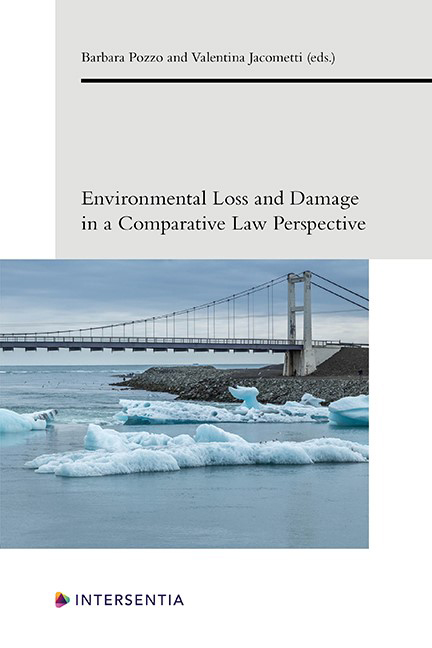Book contents
- Frontmatter
- Preface
- Contents
- List of Authors
- PART I LIABILITY FOR ENVIRONMENTAL HARM IN THE EU
- PART II PRIVATE AND CORPORATE ENVIRONMENTAL LIABILITY
- PART III THE ROLE OF CRIMINAL LIABILITY
- PART IV LEGAL TRANSPLANTS IN THE ENVIRONMENTAL FIELD: THE CASE OF ENVIRONMENTAL LIABILITY
- PART V STATE AND INTERNATIONAL ENVIRONMENTAL LIABILITY
- PART VI CLIMATE CHANGE LIABILITY
- PART VII LIABILITY, CLIMATE CHANGE AND NATURAL HAZARDS: THE ROLE OF INSURANCE
- PART VIII REAL COMPENSATION AND OFFSET REGIMES: THE STRATEGY OF “NO NET LOSS”
- About the Editors
No Net Loss in Recovery: The Overall End-of-Waste Impact Assessment
Published online by Cambridge University Press: 26 May 2021
- Frontmatter
- Preface
- Contents
- List of Authors
- PART I LIABILITY FOR ENVIRONMENTAL HARM IN THE EU
- PART II PRIVATE AND CORPORATE ENVIRONMENTAL LIABILITY
- PART III THE ROLE OF CRIMINAL LIABILITY
- PART IV LEGAL TRANSPLANTS IN THE ENVIRONMENTAL FIELD: THE CASE OF ENVIRONMENTAL LIABILITY
- PART V STATE AND INTERNATIONAL ENVIRONMENTAL LIABILITY
- PART VI CLIMATE CHANGE LIABILITY
- PART VII LIABILITY, CLIMATE CHANGE AND NATURAL HAZARDS: THE ROLE OF INSURANCE
- PART VIII REAL COMPENSATION AND OFFSET REGIMES: THE STRATEGY OF “NO NET LOSS”
- About the Editors
Summary
INTRODUCTION
CIRCULAR ECONOMY AND END-OF-WASTE STATUS
The circular economy action plan promotes more efficient utilisation of material resources. In order to pursue the objectives of the circular economy, the use of waste-based substances and objects should be promoted by creating a level playing field between them and virgin raw materials. However, due to the lack of legal certainty in the commodification of waste materials, many operators prefer virgin raw materials over waste-based ones. Nonetheless using waste-based materials often provides environmentally better outcomes when one takes into account the whole lifecycle of the product.
Due to the scope of application of the waste legislation, the question of whether a substance or object is considered to be waste is crucial. Essentially, waste legislation applies to “waste”, whereas product legislation applies to “non-waste”. Article 3(1) of Directive 2008/98/EC (Waste Framework Directive, WFD) defines waste as any substance or object which the holder discards or intends or is required to discard. However Article 6 of the WFD provides a set of criteria to determine whether the material has ceased to be waste (end-of-waste, EoW):
Member States shall take appropriate measures to ensure that waste which has undergone a recycling or other recovery operation is considered to have ceased to be waste if it complies with the following conditions:
a) the substance or object is to be used for specific purposes;
b) a market or demand exists for such a substance or object;
c) the substance or object fulfils the technical requirements for the specific purposes and meets the existing legislation and standards applicable to products; and
d) the use of the substance or object will not lead to overall adverse environmental or human health impacts.
These criteria introduce a clear distinction between waste and non-waste: they separate safe recovered materials from those that still require the governance of waste legislation in order to control the risks involved in their utilisation. Therefore, the EoW criteria and their interpretation play a key role in the stemisation of circular economy.
The legislation that applies to similar non-waste products applies, instead of waste legislation, to materials after they cease to be waste. Usually this legislation regulates both the suitability of the material for the use to which it is being put and, through various kinds of product standards and limit values, the risks related to such use.
- Type
- Chapter
- Information
- Environmental Loss and Damage in a Comparative Law Perspective , pp. 483 - 498Publisher: IntersentiaPrint publication year: 2021



